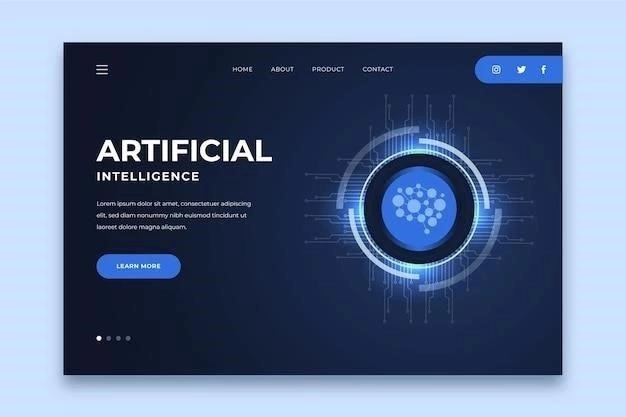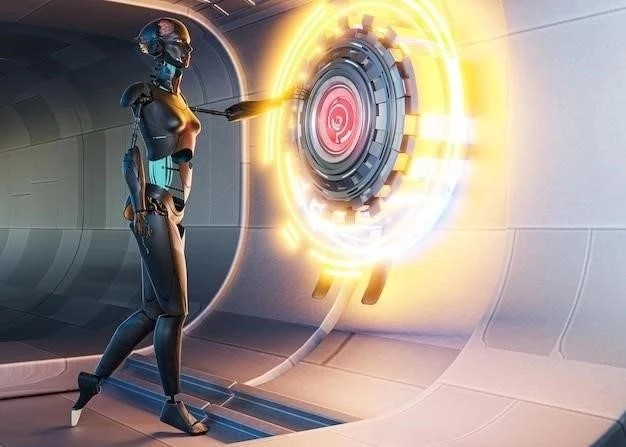The history of technology is a vast and intricate tapestry woven from human ingenuity and the relentless pursuit of progress. From the rudimentary tools of our early ancestors to the sophisticated algorithms driving artificial intelligence, the journey of technological advancement has been marked by groundbreaking inventions that have reshaped civilizations and redefined the very essence of human existence. This article delves into the annals of technological history, highlighting key milestones that have shaped our world, from the invention of the wheel to the rise of artificial intelligence.

The Dawn of Innovation: Ancient Technology (Prehistory ─ 500 CE)
The seeds of technology were sown in the fertile grounds of human necessity and curiosity long before recorded history. The earliest humans, driven by the need to survive and adapt to their environment, developed fundamental tools that laid the foundation for future technological advancements.
Key Inventions of the Ancient World:
- The Wheel (c. 3500 BCE): Often cited as the most important invention of all time٫ the wheel revolutionized transportation٫ agriculture٫ and countless other aspects of ancient life. Its impact on human civilization is immeasurable٫ paving the way for the development of complex machinery and long-distance trade.
- The Plow (c. 4000 BCE): This agricultural innovation transformed farming practices, enabling humans to cultivate larger areas of land with greater efficiency. The plow significantly increased food production, contributing to the growth of settlements and the rise of civilizations.
- Writing (c. 3200 BCE): The development of writing systems marked a pivotal moment in human history. It allowed for the recording and transmission of knowledge, ideas, and stories across generations, laying the groundwork for organized societies and the advancement of human thought.
- Metalworking (c. 4000 BCE): The discovery and mastery of metalworking techniques ushered in a new era of technological innovation. The use of copper, bronze, and later iron, revolutionized toolmaking, weaponry, and construction, leading to the creation of more durable and sophisticated objects.
The Rise of Empires: Classical and Medieval Technology (500 CE ─ 1500 CE)
The classical and medieval periods witnessed the rise and fall of great empires, and with them, significant technological advancements. Innovation flourished in various parts of the world, driven by the need for military superiority, economic expansion, and societal progress.
Notable Inventions of the Classical and Medieval Eras:
- The Roman Aqueducts (c. 312 BCE): A testament to Roman engineering prowess٫ aqueducts revolutionized water management and sanitation. These sophisticated systems transported fresh water over long distances٫ supplying cities and towns and supporting population growth.
- The Printing Press (c. 1440 CE): Johannes Gutenbergs invention of the printing press using movable type revolutionized communication and knowledge dissemination. The ability to mass-produce books and other printed materials democratized access to information, fueling the Renaissance and subsequent intellectual revolutions.
- The Compass (c. 11th Century): This navigational instrument, originating in China, transformed seafaring and exploration. By aligning itself with the Earths magnetic field, the compass allowed sailors to determine direction with greater accuracy, enabling voyages across vast oceans and facilitating global trade and exploration.
- Gunpowder (c. 9th Century): Originally invented in China, gunpowders arrival in Europe in the 13th century revolutionized warfare. The development of firearms and cannons shifted the balance of power, leading to the decline of feudalism and the rise of centralized states.

A New World Order: The Renaissance and the Age of Exploration (1400-1750)
The Renaissance marked a period of renewed intellectual and cultural flourishing in Europe, leading to a surge in scientific inquiry and technological innovation. The concurrent Age of Exploration fueled the development of new technologies for navigation, shipbuilding, and warfare, propelling European powers to establish global empires.
Key Inventions of the Renaissance and the Age of Exploration:
- The Telescope (c. 1608): While its invention is often attributed to Hans Lippershey, Galileo Galileis improvements to the telescope revolutionized astronomy. By magnifying distant objects, the telescope allowed humans to observe the heavens with unprecedented clarity, challenging long-held beliefs about the cosmos and laying the foundation for modern astronomy;
- The Microscope (c. 1590): Invented by Zacharias Janssen, the microscope allowed humans to see the previously invisible world of microorganisms. This groundbreaking invention revolutionized medicine, biology, and our understanding of the natural world.
- The Caravel (c. 15th Century): This highly maneuverable sailing ship, developed by the Portuguese, was instrumental in the Age of Exploration. Its innovative design, featuring lateen sails and a shallow draft, enabled it to sail against the wind and explore shallow coastal waters, facilitating European exploration and colonization.
The Machine Age: The Industrial Revolution (1750-1900)
The Industrial Revolution, beginning in the late 18th century and continuing throughout the 19th century, was a period of unprecedented technological advancement, particularly in Great Britain. The invention of new machines, powered by steam and later electricity, transformed manufacturing, transportation, and communication, leading to profound social, economic, and environmental changes.
Transformative Inventions of the Industrial Revolution:
- The Steam Engine (1712): James Watts improved steam engine provided a powerful and reliable source of power, revolutionizing transportation, mining, and factories. The steam engine became the driving force behind the Industrial Revolution, powering steamships, locomotives, and machinery in factories.
- The Cotton Gin (1793): Eli Whitneys invention of the cotton gin mechanized the process of removing seeds from cotton fibers. This invention dramatically increased the efficiency of cotton production٫ fueling the demand for slave labor in the Southern United States and contributing to the rise of the textile industry.
- The Telegraph (1837): Samuel Morses invention of the telegraph, along with the development of Morse code, revolutionized long-distance communication. The ability to transmit messages electronically over long distances in near real-time transformed business, news, and personal communication.
- The Telephone (1876): Alexander Graham Bells invention of the telephone further revolutionized communication by enabling voice transmission over long distances. This groundbreaking invention paved the way for the development of the modern telecommunications industry.
- The Light Bulb (1879): Thomas Edisons development of a practical and commercially viable incandescent light bulb illuminated the world, extending the workday and revolutionizing home life.
The Second Industrial Revolution (1870-1914)
Building on the foundations laid during the first Industrial Revolution, the second Industrial Revolution witnessed an explosion of technological innovation, particularly in the fields of electricity, chemistry, and mass production. This era saw the rise of new industries, including steel, oil, and electrical power, further transforming society and shaping the modern world.
Key Inventions of the Second Industrial Revolution:
- The Internal Combustion Engine (late 19th Century): The development of the internal combustion engine, fueled by gasoline and diesel, revolutionized transportation. This invention led to the creation of automobiles, airplanes, and other vehicles, transforming mobility and shaping the modern world.
- The Automobile (late 19th Century): Karl Benz and Gottlieb Daimler are credited with developing the first practical automobiles. This invention transformed personal transportation٫ leading to the development of the modern automobile industry and shaping urban planning and infrastructure.
- The Airplane (1903): The Wright brothers successful flight at Kitty Hawk marked a pivotal moment in human history. The invention of the airplane fulfilled humanitys age-old dream of flight, revolutionizing travel and warfare.
- Mass Production (late 19th Century): Pioneered by Henry Ford, mass production techniques, such as the assembly line, revolutionized manufacturing. By breaking down complex tasks into smaller, repetitive steps, mass production enabled the efficient and affordable production of goods, making them accessible to a wider population.
The Information Age: The Digital Revolution (1950-Present)
The mid-20th century witnessed the dawn of the Information Age, a period marked by the rapid development and proliferation of digital technologies. The invention of the transistor, followed by the integrated circuit, paved the way for the miniaturization of electronics and the rise of computers, the internet, and mobile devices. This era has seen an unprecedented explosion of information and communication technologies, transforming virtually every aspect of modern life.
Transformative Inventions of the Digital Revolution:
- The Transistor (1947): Invented at Bell Labs, the transistor revolutionized electronics by replacing bulky and inefficient vacuum tubes. This tiny semiconductor device could amplify and switch electronic signals, paving the way for the development of smaller, faster, and more efficient electronic devices, including computers, radios, and televisions.
- The Integrated Circuit (1958): Jack Kilby and Robert Noyce independently developed the integrated circuit٫ a single chip containing multiple transistors and other electronic components. This invention further miniaturized electronics٫ leading to the development of powerful and compact computers and other electronic devices.
- The Internet (1960s): Initially developed as a military communication network, the internet has evolved into a global network of interconnected computers, transforming communication, information sharing, and commerce. The internet has become an indispensable tool for billions of people worldwide, connecting people, ideas, and information like never before.
- The Personal Computer (1970s): The development of microprocessors led to the creation of personal computers, making computing power accessible to individuals and businesses. Personal computers have revolutionized countless aspects of modern life, from work and education to entertainment and communication.
- The World Wide Web (1989): Tim Berners-Lees invention of the World Wide Web made the internet accessible to a wider audience. The development of web browsers٫ websites٫ and hyperlinks created a user-friendly interface for navigating the vast resources of the internet٫ transforming it into a global platform for information sharing٫ communication٫ and commerce.
- Mobile Devices (1990s-Present): The development of mobile phones, smartphones, and tablets has further revolutionized communication and information access. These portable devices, equipped with powerful processors, high-resolution displays, and a wide range of sensors, have become indispensable tools for billions of people worldwide, connecting them to information, entertainment, and each other.
The Future of Technology: Artificial Intelligence and Beyond
As we stand at the cusp of a new technological era, artificial intelligence (AI) is poised to revolutionize our world in ways we are only beginning to imagine. AI, which encompasses a wide range of technologies that enable computers to mimic human intelligence, is already transforming industries such as healthcare, finance, transportation, and manufacturing.
Key Areas of AI Development:
- Machine Learning: This branch of AI focuses on enabling computers to learn from data without explicit programming, allowing them to improve their performance on specific tasks over time.
- Deep Learning: A subset of machine learning, deep learning utilizes artificial neural networks with multiple layers to analyze vast amounts of data, enabling computers to perform complex tasks such as image recognition, natural language processing, and decision-making.
- Robotics: AI is playing an increasingly important role in robotics, enabling robots to perform complex tasks with greater autonomy and precision. AI-powered robots are being used in a wide range of applications, from manufacturing and logistics to healthcare and exploration.
- Natural Language Processing (NLP): NLP focuses on enabling computers to understand and process human language, enabling applications such as language translation, chatbots, and voice assistants.
Conclusion
The history of technology is a testament to human ingenuity and the relentless pursuit of progress. From the rudimentary tools of our early ancestors to the sophisticated algorithms driving artificial intelligence, each invention has built upon the foundations laid by those who came before, pushing the boundaries of what is possible and shaping the world we live in today. As technology continues to evolve at an exponential pace, we can only marvel at the possibilities that lie ahead, and the profound impact that future innovations will have on human civilization.
The Converging Technologies Reshaping Reality (Present ─ Near Future)
We are witnessing a convergence of technologies like never before. Artificial intelligence is no longer a standalone field, but rather a catalyst, intertwining with and amplifying other groundbreaking innovations. This confluence is poised to reshape our understanding of reality and redefine the limits of human potential.
Key Converging Areas:
- AI-Powered Biotechnology: The intersection of AI and biotechnology is ushering in a new era of personalized medicine and healthcare. Machine learning algorithms are analyzing vast datasets of genomic information, protein structures, and clinical records to identify patterns and develop targeted therapies. AI-powered drug discovery platforms are accelerating the development of new treatments, while predictive analytics are enabling early disease detection and personalized health interventions.
- Quantum Computing and AI: Quantum computing, with its ability to perform calculations exponentially faster than classical computers, has the potential to supercharge AI algorithms. This synergy could lead to breakthroughs in fields such as materials science, drug design, and financial modeling, solving problems that are currently intractable for even the most powerful classical computers.
- AI and the Metaverse: The metaverse, a persistent, shared virtual world, is being built upon a foundation of AI technologies. AI is powering realistic avatars, immersive environments, and intelligent agents that can interact with users in natural and engaging ways. This convergence has the potential to revolutionize social interactions, entertainment, and even the way we work and learn.
- AI and Sustainability: AI is playing an increasingly important role in addressing global challenges such as climate change and resource depletion. AI-powered systems are optimizing energy grids, reducing waste, and developing innovative solutions for a more sustainable future. From precision agriculture to climate modeling, AI is providing insights and tools to mitigate the impacts of human activity on the planet.

Navigating the Ethical Frontiers of Technological Advancement
As we embrace the transformative potential of these converging technologies, we must also confront the profound ethical considerations they raise. Issues of privacy, bias, job displacement, and the potential misuse of AI require careful consideration and proactive solutions. It is imperative that we develop ethical frameworks and regulatory guidelines to ensure that these powerful technologies are developed and deployed responsibly, for the benefit of all humanity.
Key Ethical Considerations:
- Algorithmic Bias: AI systems are only as good as the data they are trained on. Bias in training data can lead to biased outcomes, perpetuating and even amplifying existing societal inequalities. It is crucial to develop methods for detecting and mitigating bias in AI systems to ensure fairness and equity.
- Job Displacement and Workforce Transition: As AI and automation technologies become increasingly sophisticated, they have the potential to displace workers in various industries. It is essential to invest in education, retraining programs, and social safety nets to support workers in transitioning to new roles and industries.
- Data Privacy and Security: AI systems often rely on vast amounts of personal data. Protecting the privacy and security of this data is paramount. Robust data protection regulations, encryption technologies, and responsible data governance practices are essential to prevent misuse and safeguard individual rights.
- Autonomous Weapons Systems: The development of autonomous weapons systems, often referred to as “killer robots,” raises profound ethical concerns. International treaties and ethical guidelines are necessary to prevent an AI arms race and ensure that human beings retain meaningful control over the use of force.
Conclusion: Shaping a Future Defined by Responsible Innovation
The history of technology is a testament to human ingenuity and our relentless pursuit of progress. As we stand at the threshold of an era defined by artificial intelligence and converging technologies, we have the opportunity and the responsibility to shape a future where these powerful tools are harnessed for the betterment of humanity. By embracing ethical considerations, fostering collaboration, and prioritizing human well-being, we can navigate the complexities of this technological revolution and create a future where innovation and human values go hand in hand.










